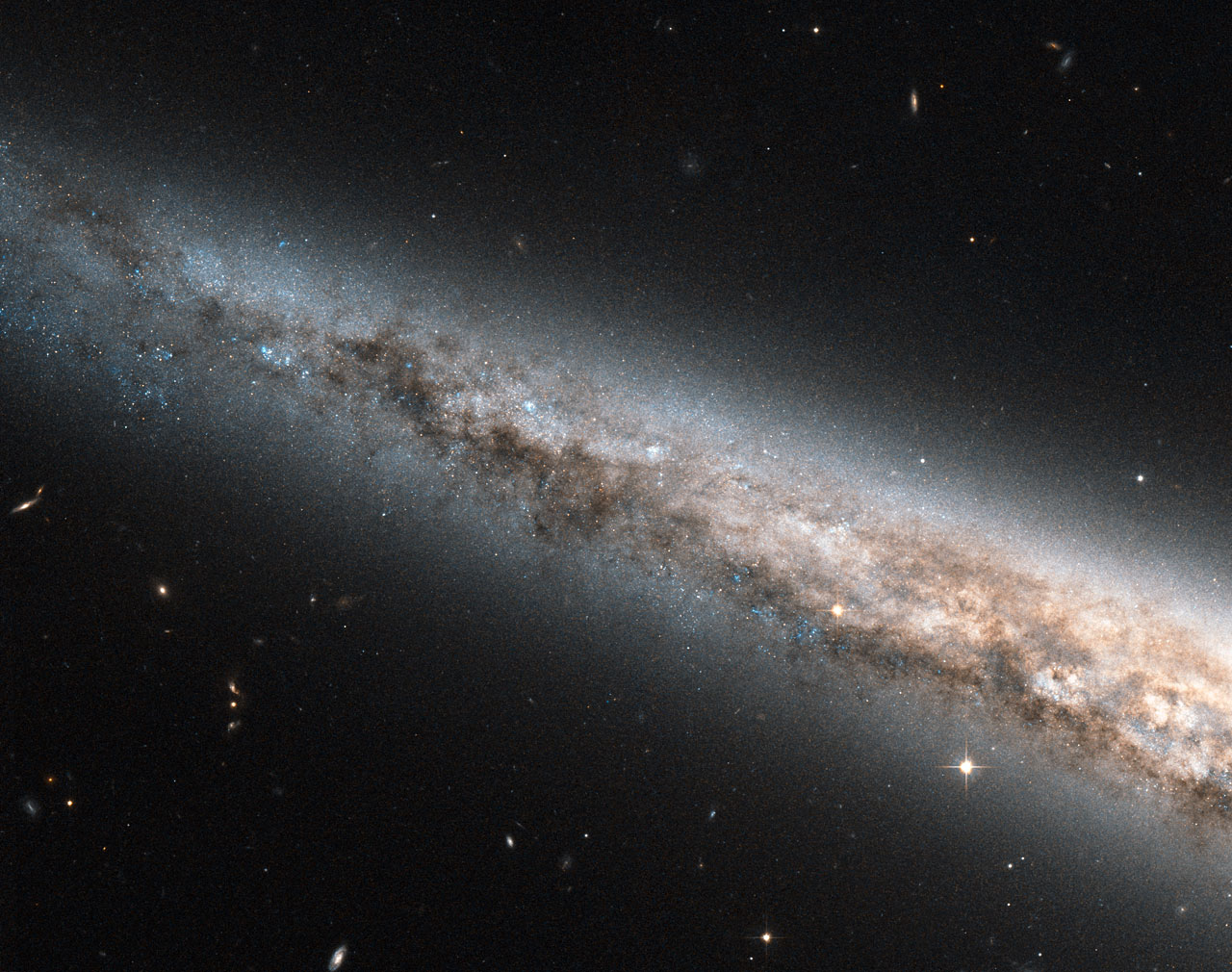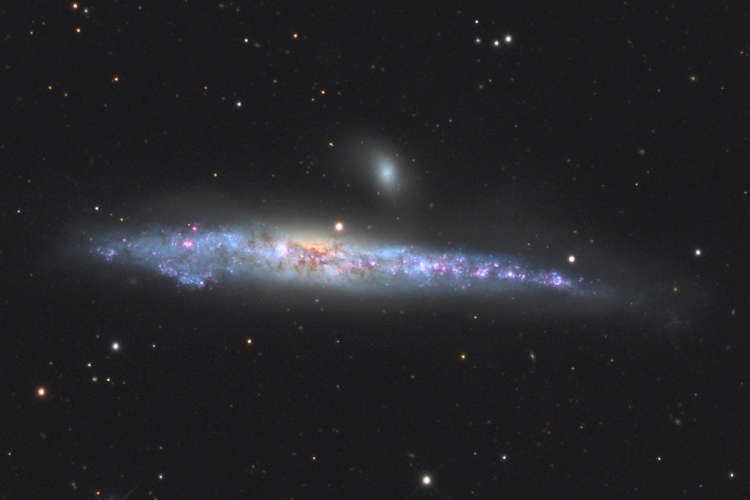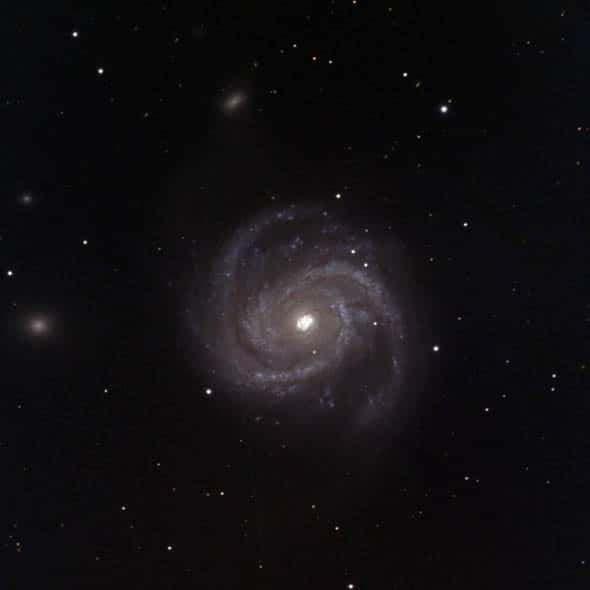Chris Peterson wrote:Ann wrote:Fascinatingly, the Andromeda galaxy, which often looks quite blue in pictures, is redder than NGC 4565 - the B-V index of M31 is +0.92! Of course the Andromeda galaxy is so much closer to us than NGC 4565, so it is so much easier to bring out the faint blue population of M31.
Why is that?
It used to be easier. Considering what color pictures of galaxies used to look like eight years ago or so, it is clear that faint blue clusters and associations were hard to photograph. Or maybe it wasn't so hard to photograph them, but perhaps it just wasn't fashionable to emphasize faint populations of galaxies back then - maybe astrophotographers just liked to give a reasonable portrait of the brightness distribution of galaxies back then! Maybe astrophotographers weren't interested in bringing out a lot of faint detail in galaxies back then, or maybe they just couldn't. And because the apparent luminosity of the M31 clusters is higher than the apparent brightness of the NGC 4565 clusters, it's not surprising that blue stars in M31 showed up in pictures at a time when contemporary images of NGC 4565 turned that galaxy's blue stars into no-shows.
I'm the owner of a book from 1988,
The Color Atlas of Galaxies by James D Wray. Wray shows the NGC 206 area in the Andromeda and shows it to be full of ultraviolet-bright stars (his atlas portrays the galaxies in UBV). However, NGC 4565 is "relentlessly yellow" in Wray's atlas, as if it contained no ultraviolet or even blue stars at all.
By comparison, similarly edge-on NGC 4631 looks brilliantly blue in Wray's atlas, with only a bit of green and even less yellow interspersed with the blue areas. Even edge-on NGC 891, which is more nearby than NGC 4565, shows hints of blue in Wray's atlas, although that galaxy is certainly predominantly yellow.
Bruce Hugo and Leslie Gaul/Adam Block/NOAO/AURA/NSF
The ESO picture from 2002 that I showed in my previous post similarly shows NGC 4565 as "perfectly yellow". And this NOAO image from 2004 also depicts NGC 4565 as basically all yellow.
Compare the Bruce Hugo/Leslie Gaul/Adam Block 2004 image of NGC 4565 with Adam Block's 2005 image of M31
here. Adam Block's image of M31 is seen to contain blue clusters and emission nebulae, although nothing similar is seen in NGC 4565. Note, however, that the blue population is seen to be rather faint and not so extensive in Adam Block's image from 2005. However,
in this picture, which Adam Block has taken a few years later, the blue population of M31 is more emphasized.
I believe that "RGB astrophotographers" nowadays take pains to bring out the blue populations of predominantly yellow galaxies. It could be that the CCD devices have become more sensitive to blue light now than they were during the first years of the 21st century.
My guess is that it was relatively easy to photograph (the faint) blue populations of M31 with blue-insensitive equipment, for the simple reason that galaxy is so nearby. (Alternatively, some blue stars were seen in M31 because their nearness made them bright enough to show up in pictures that didn't specifically try to bring out the faint outer parts of Andromeda.)
NGC 4565, on the other hand, looked all yellow because it's much farther away than M31
and because its clusters are comparatively small and faint. But so are, for the most part, the clusters of M31. If M31 had been as far away as NGC 4565, then James D Wray's atlas would almost certainly have shown it to be all yellow. Similarly, if ESO had portrayed a circa 50 million-light-year-distant Andromeda galaxy in 2002, Andromeda would have looked as yellow as NGC 4565 does in the ESO picture from that year.
Ann







